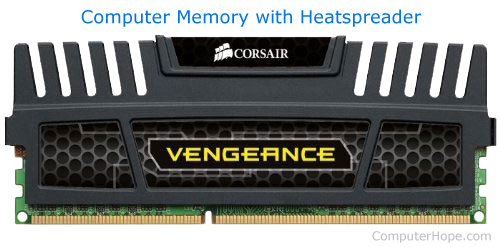Heat sink

A heat sink is a device that incorporates a fan or another mechanism to reduce the temperature of a hardware component (e.g., processor). There are two heat sink types: active and passive. The picture shows a heat sink with both active and passive cooling mechanisms.
Active heat sink
Active heat sinks utilize the computer's power supply and may include a fan. Sometimes these types of heat sinks are called an HSF, which is short for heat sink and fan. There are also liquid cooling systems, which have become popular in recent years.
If you are looking to purchase a fan heat sink, we recommend those with ball bearing motors as they often last longer than sleeve bearings.
Passive heat sink
Passive heat sinks are those that have no mechanical components. Consequently, they are 100% reliable. Passive heat sinks are made of an aluminum finned radiator that dissipates heat through convection. For passive heat sinks to work at their full capacity, there should be a steady airflow moving across the fins.
What are heat spreaders?
Heat spreaders are another type of passive heat sink used to help dissipate the heat produced by RAM (random-access memory) modules.

What devices in a computer use a heat sink?
The components that generate the most heat in your computer are the CPU (central processing unit), video card (if your computer has one), and the power supply. They always have some cooling, usually a fan. Other components that may have a heat sink include the north bridge, south bridge, and memory. It is also not uncommon to find heat sinks on other expansion cards and hard drives.
Computer acronyms, CPU terms, Fan, Hardware terms, Thermal compound
